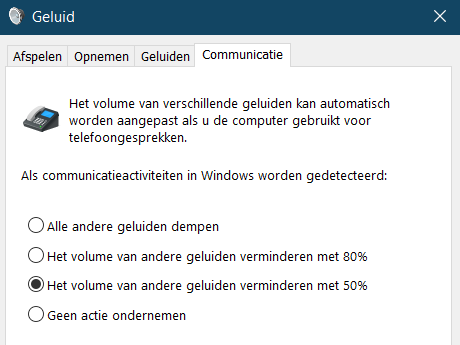
The computer has many places where sound can come from and many places to control which programs are allowed to make sound. Here are some smart tips.
Windows sound settings
On the PC, there are a lot of things that produce sound: the Windows system, programs, and sometimes websites you open. There are different ways to make those sounds louder and softer or to match them. We give some useful tips.
Where do I turn the volume up or down?
‘Just’ turning the sound up or down isn’t always as simple as it seems. Windows has its own sound control, but if you watch a movie on the internet, for example, there is also a volume button. And to make it even more complicated: some headphones also have their own volume knob. This is what happens when you use the different volume buttons:
- With the Windows controller

, all sounds coming out of the computer become louder or softer.
- When adjusting the sound of a movie or music player, the sounds of incoming e-mails, for example, remain just as loud.
- If headphones are connected and you turn the volume down, only the sound coming from the headphones will be muted. If you remove the connection cable from the computer, the sound will be played at the same volume as before. The same goes for externally connected speakers, for example.
Adjust volume per program
Turn the sounds of programs off or down so that you can enjoy music without beeps and beeps. With the Volume mixer you control which program is allowed to make sound and how loud. Read more about it in the tip ‘Easy adjusting the volume per program’.
To the sound settings
There are many more settings for the sound than just turning it up or down. You can access the sound settings via the Settings menu or via an icon in the Taskbar.
From the Settings menu:
- Click the Start button.
- Click the icon Institutions
. That’s the gear icon.
- In Windows 10, click System.
- click on Sound.
From the Taskbar:
- Right click on the speaker icon

.
- In Windows 10, click Open sound settings. In Windows 11, click Sound settings.
Sound via connected device
You can control which device the sound comes from via the sound settings. From the computer itself, via connected boxes or the television, for example.
- Connect the device to the computer. If the sound does not play automatically through the device, follow the steps below.
- Go to the sound settings as described above.
- Customize the output device. Do that as follows:
- Windows 10: Under “Choose your output device,” click the down arrow and choose the device you want the sound to come from.
- Windows 11: click on the small arrow next to ‘Choose where to play sound’. Then click on the desired audio device.
Mute other sounds during phone call
During (video) calling on the computer, for example via Skype, it is not pleasant to be disturbed by the ‘ping’ of a new e-mail, or a message from the virus scanner. Set other sounds to be automatically softer when calling from the computer.
- In Windows 10, right click on the ‘Speakers’ icon
in the System Tray. > Sounds. In Windows 11, right click on the speaker icon > Sound settings.
- In Windows 11, click at the bottom on More sound settings.
- Click on the tab Communication.
- Click on the circle of one of the options ‘Mute all other sounds’ or ‘Reduce the volume of other sounds by 50%’.

- click on OK to save the setting and close the window.
Turn off sounds from the browser
Suppose you listen to music on your computer, but the site you open starts blaring through it. Turn off the sound of the site with one click in the right place. Read more about it in the tip ‘Turn off sound from websites’.